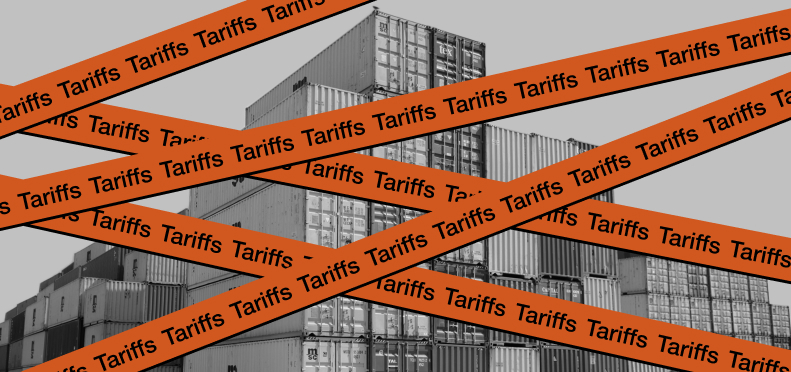The recent U.S.-China trade agreement announced yesterday (May 12, 2025) provides some relief by reducing general tariffs from 145% to 30%, but it contains a critical gap that continues to threaten many ecommerce business models. Despite the headline tariff reductions, the deal fails to address one of the most significant disruptions to the ecommerce ecosystem: the elimination of the de minimis exemption.
The De Minimis Exclusion: A Critical Oversight
Today’s trade agreement conspicuously omits any provisions regarding the de minimis exemption that was terminated on May 2, 2025. According to a source familiar with the discussions who spoke to Reuters, “The trade agreement between the U.S. and China does not include provisions for ‘de minimis’ exemptions pertaining to e-commerce businesses.” This means that despite the broader tariff reductions, small-value shipments from China to U.S. consumers will continue to face punishing 120% tariffs.
This exclusion creates several immediate problems for ecommerce:
Devastating Impact on Dropshipping and Direct-from-China Models
The business model of many ecommerce operations-particularly dropshippers and marketplaces like Temu and Shein-was built around the de minimis exemption, which allowed packages valued under $800 to enter the U.S. duty-free. Without this exemption, these businesses face existential challenges:
- Cost Structure Disruption: The 120% tariff on previously duty-free shipments represents a sudden, massive increase in costs that few business models can absorb or pass along to consumers.
- Competitive Disadvantage: Larger retailers who import in bulk and distribute from U.S. warehouses now have a significant advantage over direct-ship models, as they’re subject to the reduced 30% tariff rather than the 120% rate.
- Supply Chain Restructuring Challenges: While larger businesses can potentially adjust their supply chains over time, many smaller ecommerce operations lack the capital, infrastructure, or expertise to quickly pivot to domestic warehousing.
As Amazon Sellers Attorney notes, the tariff reductions from 145% to 30% will help some businesses, but this primarily benefits traditional importers rather than direct-to-consumer sellers.
Disproportionate Effect on Small Businesses
The continued absence of the de minimis exemption hits small ecommerce businesses particularly hard:
- Limited Resources for Adaptation: Small businesses typically lack the financial cushion to absorb higher costs while they restructure operations.
- Cross-Border Sellers Stranded: Many small sellers who relied on direct shipping from Chinese suppliers now face prohibitive costs that make their business models unsustainable.
- Inventory Challenges: Small businesses that had relied on just-in-time ordering from Chinese suppliers now face the difficult choice of either paying massive tariffs or investing in inventory and warehousing-both options requiring significant capital.
Uncertainty Compounds the Problem
Perhaps most troubling for ecommerce businesses is the continued uncertainty surrounding these tariffs:
- Temporary Relief, Permanent Problem: While the general tariff reduction is explicitly temporary (90 days), there’s no indication of whether or when the de minimis issue might be addressed. As Zonos’ tariff update guide notes, the situation remains fluid and subject to change.
- Planning Paralysis: This uncertainty makes it nearly impossible for affected businesses to make informed decisions about inventory, pricing, or supply chain adjustments.
- Consumer Confusion: The complex and changing tariff landscape creates confusion for consumers, who may not understand why prices from some sellers have skyrocketed while others remain relatively stable.
Reshaping the Competitive Landscape
The selective nature of the tariff relief is already reshaping the competitive dynamics in ecommerce:
- Advantage to Traditional Retailers: Brick-and-mortar retailers and large ecommerce operations with domestic warehousing capabilities now have a significant cost advantage over direct-ship competitors.
- Platform Power Shifts: Major platforms like Amazon, which hosts both domestic and international sellers, may see shifts in marketplace dynamics as Chinese sellers either absorb costs, raise prices, or exit the market.
- Consumer Choice Reduction: The policy change reduces consumer choice and access to affordable products, especially in categories where Chinese manufacturing has dominated.
The Bottom Line for Ecommerce
While the broader tariff reduction from 145% to 30% provides some breathing room for traditional import models, the continued 120% tariff on small-value shipments represents an ongoing crisis for many ecommerce businesses. As fractional CFO advisors note, businesses should “not assume the pause will become permanent” and should instead focus on building resilience into their supply chains.
The selective nature of the tariff relief creates winners and losers based not on business quality or consumer preference, but on supply chain structure and scale. According to Passport’s analysis of Trump’s 2025 tariffs, 81% of ecommerce leaders believe that changing tariffs and regulations could jeopardize their global strategies.
For ecommerce businesses caught in this situation, the next 90 days will be critical for developing new strategies to either absorb these costs, restructure operations, or potentially exit affected market segments altogether.
Check Out Our Related Articles:
Trump’s Tariff Pause: The Top 3 Strategic Recommendations for Ecommerce and CPG Businesses – The temporary pause on U.S. tariffs offers a critical window for e-commerce and CPG companies to optimize their supply chains, reevaluate pricing, and strengthen financial resilience. Fractional
How Canadian E-commerce Businesses Are Adapting to US Tariffs: Strategic Shifts From a Fractional CFO – Canadian e-commerce companies are responding to rising U.S. tariffs by diversifying their supply chains, relocating warehousing, and focusing more on domestic and non-U.S. international markets.
Trump’s Tariffs: What Canadian E-commerce Businesses Need to Know for May – In May 2025, the U.S. imposed new tariffs under IEEPA, including 25% duties on most Canadian imports and up to 50% on non-USMCA steel and aluminum, significantly impacting Canadian e-commerce businesses.

